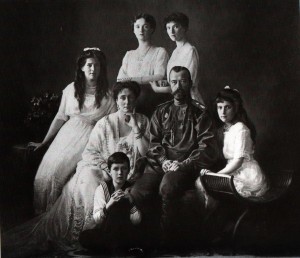Researchers at the University of Leicester announced yesterday that the remains discovered in a Leicester parking lot in September, 2012 had been authenticated as those of King Richard III of England, who died at the age of thirty-two on the Battle of Bosworth field. Mitochondrial DNA from the skeleton matched that of Michael Ibsen, a Canadian seventeenth generation descendant of Richard III’s sister, Anne of York, in the female line.
The authentication of Richard’s remains provides a wealth of information for historians beyond confirmation of where he was buried. The King’s skeleton shows evidence of scoliosis, curvature of the spine resulting in one shoulder being higher than the other. The symptoms of scoliosis are not the same as the hunched back displayed by the King in William Shakespeare’s play Richard III, but it demonstrates that the playwright was exaggerating Richard’s actual appearance rather than inventing a physical condition for his central character.
Analysis of Richard’s remains also reveals the extent of his battle injuries at Bosworth Field. The King suffered an arrow wound to the spine, sword blows to the head that were the likely cause of his death and “humiliation” wounds inflicted after his death by members of the victorious forces of his opponent, Henry Tudor, who succeeded Richard as King Henry VII.
Now that the question of the authenticity of Richard III’s remains has been answered further questions have emerged about the nature of the funeral and how the discovery will inform the often conflicting accounts of the King’s character and brief reign. The Richard III society has received a substantial donation toward the King’s burial in Leicester cathedral.
As Leicester has experienced recent economic troubles, the presence of the remains of the famous King would benefit tourism in the region. The suitability of Leicester cathedral as a final resting place for the King is already controversial, however, as Richard did not have any connection with the region beyond his violent death. Furthermore, Richard reigned before the English Reformation and was therefore a Roman Catholic and Leicester Cathedral is an Anglican place of worship
The historical significance of the discovery is also a matter of debate as the University of Leicester researchers have worked closely with the Richard III society, which is committed to presenting a sympathetic biography of the King and dismisses Shakespeare’s interpretation as Tudor propaganda. In today’s Guardian, History Today editor Paul Lay accused the University of Leicester of “abandoning impartiality with its embrace of the Ricardians.”
The analysis of the remains provide some insights into Richard’s life and death but they do not reveal whether he was responsible for the deaths of his nephews, the deposed King Edward V and Richard, Duke of York, often described as “The Princes in the Tower.” Even with the discovery of his remains, Richard III’s legacy will continue to be fiercely contested as contradictory evidence exists regarding his motives for seizing the throne from his young nephew, Edward V, in 1483. One of the King’s most recent biographers, David Baldwin, argues that Richard may have had a “split personality,” acting honourably as King Edward IV’s brother, the Duke of Gloucester but displaying ruthless political instincts when his interests seemed to be threatened by the influence of Edward IV’s widow’s family, the Woodvilles, during the reign of Edward V.

Emperor Nicholas II of Russia, his wife, Empress Alexandra and their five children (clockwise from left), Maria, Olga, Tatiana, Anastasia and Alexei in 1913
The controversy surrounding the burial and significance of Richard III’s remains is unsurprising as the last significant discovery of a lost royal burial ground also generated considerable religious and political debate. In 1979, amateur Russian archaeologists discovered the remains of Emperor Nicholas II of Russia, Empress Alexandra, three of their children and four of their servants outside Sverdlovsk (Yekaterinburg) where the entire family had been murdered by Bolsheviks in 1918. In the 1990s, after the collapse of the Soviet Union, a full excavation of the grave site took place by a combined team of Russian and American researchers.
In common with Richard III, the Romanov remains were identified through mitochondrial DNA analysis. Empress Alexandra’s grand nephew, Prince Philip, Duke of Edinburgh, provided the DNA to authenticate Alexandra and her children while a granddaughter of Nicholas II’s niece, Princess Irina, provided the DNA match for the Emperor. Despite the success of this research, the Russian Orthodox Church did not accept the authenticity of the remains of the Imperial family, who had been canonized as saints, and Nicholas, Alexandra, three of their daughters and their servants were interred in St. Petersburg’s Peter and Paul Cathedral in 1998 as nameless victims of the Russian Revolution.
The absence of two of the Imperial children from the original grave site also appeared to support decades old legends that Nicholas and Alexandra’s youngest daughter, Anastasia, survived the murder of her family. The discovery and authentication of the remains of two more Imperial children in 2007 proved that this longstanding myth was false and the entire family had died at the same time in 1918. The canonization of the Imperial Family by the Russian Orthodox Church and the legend of Anastasia’s survival complicated the response to the discovery and authentication of the Romanov remains, generating historical and religious controversy.
Yesterday’s authentication of Richard III’s remains is part of a long tradition of historical and religious debate regarding the significance of lost royal burial sites. The nature of Richard’s burial and the contribution of the discovery of his remains to the understanding of his life, reign and death remain controversial issues. It remains to be seen how the discovery will be written into the King’s contested biography.


